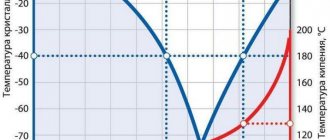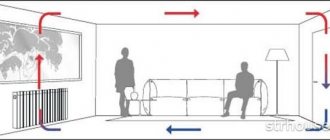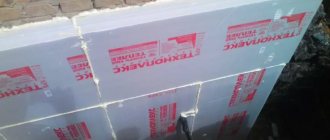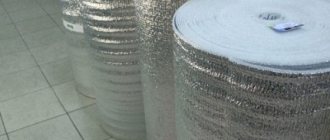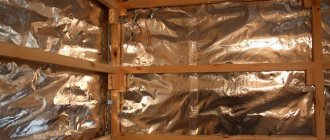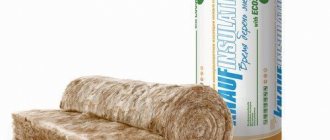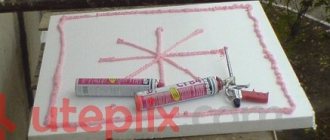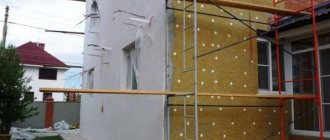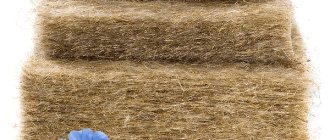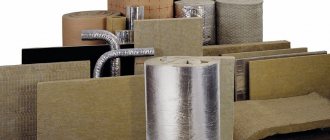Traditionally, in the wooden construction of bathhouses or residential buildings, inter-crown insulation is used to seal the joints in the walls.
The main purpose of the material is to insulate the log structure and improve the performance characteristics of the wood.
Most insulation materials contain natural components, however, some materials may contain artificial filling, which is absolutely not suitable for wooden buildings.
Why is insulation needed?
Inter-crown insulation is a universal material, therefore it is widely used for houses and baths made of rounded logs, profiled or laminated timber. In this case, the density of the insulation can be about 750 g/sq.m. with a thickness of up to 11 mm.
To reduce heat loss, the insulation is laid in one layer. It is important to remember that when using uneven or under-dried timber, the insulation is laid in several layers.
Insulation promotes timely vapor and heat insulation of wooden structures and high-quality air exchange in rooms.
When building a log bathhouse or house, an important condition is to minimize possible gaps between logs and beams. It is for this reason that work is being done to seal it with high-quality insulation.
Such measures are aimed at effectively protecting the building from adverse climatic conditions.
Let's sum it up
What material to choose is up to the owner of the house to decide. Each option has its pros and cons. Natural inter-crown insulation, especially combined flax and jute, has the best environmental friendliness.
But, as a rule, such material has a relatively short service life (about 10-20 years), after which you will have to caulk the seams.
Artificial material will last longer, according to manufacturers, up to 50 years or more. However, do not be afraid of its unnatural origin. Modern insulation materials undergo many tests before entering the market. Therefore, they will not cause harm to human health.
From a short video you will learn how to properly install inter-crown insulation.
Performance characteristics
High-quality insulation, which is laid between the crowns of logs or beams, must meet high standards of quality and safety of use. Therefore, the main performance characteristics of the material include:
- High elasticity and density, maintaining properties throughout the entire period of operation. Thanks to its elasticity, the insulation is able to take the desired shape, and its density is able to fill existing gaps between the crowns.
- Low thermal conductivity for effective protection of walls from heat loss.
- High moisture and vapor permeability.
- Resistance to mold, fungi and harmful microorganisms that arise when exposed to increased moisture and heat.
- Resistant to ultraviolet exposure and adverse weather conditions.
Plant fibers or tape material
Plant fibers are often more affordable in terms of cost, but they require more installation time.
Plant fibers are more environmentally friendly, but have a shorter service life compared to synthetic materials.
Reference. A separate article is devoted to foil materials used as insulation for ceilings and walls.
Types of interventional insulation
The modern construction market offers a large selection of natural insulation materials.
The most common options are felt, jute, moss, linen and combined.
Manufacturers also offer wear-resistant synthetic insulating materials - penofol, mineral wool, polystyrene foam boards, silicone sealants.
Without a doubt, they have higher performance characteristics in comparison with natural analogues, but they are not suitable for insulating wooden buildings.
Felt (sheep's wool)
A natural material for insulation, which in its performance properties is superior to tape insulation made from plant fibers.
Felt is a worthy option for buildings made of profiled timber. It is simply irreplaceable for insulating residential buildings and baths, although it is not cheap.
During the production process, the felt seal is carefully treated with special fire-retardant compounds, as a result of which it absorbs moisture well and quickly releases it when heated.
It is resistant to mold and mildew and does not cake during use.
Felt is suitable for insulating walls and partitions of log houses and bathhouses.
Jute
Jute material is a modern representative of tape insulation, which has a dense and uniform structure. Jute is an expensive material, unlike flax, but it is of higher quality.
A distinctive characteristic of jute is its high hygroscopicity.
Jute inter-crown insulation is made from annual tropical plants of the mallow family, which grow in hot countries. Plants contain about 25% lingin - a natural resin that has high antiseptic properties.
Jute has a lot of advantages that set it apart from its main competitors:
- Environmental friendliness and safety;
- Good thermal conductivity;
- Resistance to rotting and fungal attack;
- Durability and practicality;
- Easy installation;
- Attractive appearance.
Disadvantages include susceptibility to caking and high cost.
Walls insulated with jute tape do not require additional decorative finishing, and the seams are smooth and tight.
Jute is represented by the following varieties: jute tow, jute felt and jute flax.
- Tow has solid and long fibers. Used for caulking seams.
- Felt is characterized by increased fragility and stiffness of the fibers. Used to seal door and window openings.
- Jute flax is a mixture of flax and jute fibers. It is characterized by high wear resistance and elasticity. Suitable for caulking walls and partitions.
Moss
Currently, moss remains an accessible and cheap option for insulating crowns in houses and bathhouses made of logs or timber. Moss is a natural thermal insulation material that has unique performance characteristics:
- Environmentally friendly;
- Vapor tightness;
- Resistant to creasing and deformation;
- Antiseptic properties.
Moss quickly absorbs excess moisture and provides good air exchange. It is recommended to use sphagnum (white moss) and cuckoo flax (red moss) as inter-crown insulation.
The most durable and wear-resistant is red moss, which is characterized by a high content of antiseptic components and resistance to high moisture.
White moss has high thermal insulation properties and reliably protects wood from fungal infections.
Despite the obvious advantages, moss also has some disadvantages - low fire resistance and difficulty in installation.
Linen
Linen materials for insulation have been used for quite a long time. Linen is hypoallergenic, provides good air exchange, does not create static charges, and is resistant to mold on the walls. Interventional insulation of this type has:
- High elasticity and softness of fibers;
- Long service life;
- Low thermal conductivity coefficient;
- Resistant to UV radiation, microorganisms and mold;
- Affordable price.
Currently, manufacturers offer two types of linen insulation - tow and flax wool.
Tow
It is characterized by low cost and complexity of installation. Inter-crown insulation for timber is highly hygroscopic and prone to rotting, so it is more advisable to use it to seal window and door openings.
When using tow, caulking is carried out twice - in the first year after construction is completed, and in the second year - after the building has settled.
Lnovatin
A material that is made from flax fibers using special equipment.
To give strength, the finished fabric is stitched with threads. Linen batting is affordable and easy to install. This is a good economical option that is suitable for insulating houses and baths.
Often used after complete shrinkage of the structure.
Combined insulation materials
This category includes natural-based insulation without the use of synthetic fibers.
They have unique performance properties of the material from which they are made.
Flax in combined materials increases elasticity and practicality, jute increases resistance to creasing and caking.
The special structure of combined insulation materials satisfies the needs of the building material, taking into account the climatic conditions in which it is used.
Laying technology - stages of work
Insulation is most often placed in the cracks between the crowns, using one of three popular methods. The choice of laying method depends on the thickness of the layer in a particular roll.
Figure 6. Methods of laying logs in joints
- single layer jute;
- laying the insulating layer in half;
- folding the material along the edges.
Laying on timber
The width of the jute insulation is selected so that it fits into the distance between the grooves, then the efficiency of its use will be the best.
If you are building a log-type log house, then use jute felt of a larger width, with a thickness of 10-15 mm, for insulation. The excess material along the width is then folded and caulked.
Fig. 7. Insulation between the rows of timber will reliably protect the house from low temperatures
What insulation is suitable for a bath?
Beginners often ask themselves the question: what insulation to choose for the walls of a bathhouse?
For a bathhouse, it is recommended to use inter-crown insulation for timber made of natural fibers. This seal does not accumulate moisture, provides good air exchange, and is resistant to rotting and destruction.
The best representatives are insulation materials made of moss, jute and flax, as well as their derivatives. They are successfully used for caulking wooden houses and baths.
To understand which is the best insulation for a bathhouse, you should pay attention to the main characteristic of the material – density.
For timber structures, insulation with a thickness of 4 mm and a density of 350–450 g/sq.m. is used.
For steam rooms made from rounded logs, products with a thickness of 5 mm and a density of at least 600 g/sq.m. are better suited.
For houses with 2–3 floors combined with a bathhouse, material with a thickness of 9–11 mm and a density of up to 750 g/sq.m is used.
To choose a quality sealant, you need to know what type of wood is used to build the log house.
For bathhouses made of timber and rounded logs, you can choose materials up to 10 mm thick - jute felt, flax felt, a combined version with jute and flax.
For a chopped-type bathhouse, it is better to choose insulation up to 15 mm thick - felt made of jute and flax, tow in ribbons and bales made of flax or jute, moss.
How to make calculations
In order to calculate how much material is required to insulate your home, you need to follow certain rules. First, we determine the density of the insulating material, which depends on its weight, length and width. Determining these parameters will not be difficult, since the weight can be found out by weighing the material, and you know the width and length already upon purchase on the price tag.
Next you need to enter this data into the formula and calculate the result. It is known that density is directly proportional to weight, expressed in grams, and inversely proportional to the width and length of the material, expressed in meters. As a result, the resulting indicator should coincide with what is indicated by the seller (or manufacturer).
Example:
- if the thickness is 0.5 cm, then the density should be 400 g/m2;
- if the thickness is 0.8-1 cm, then the density is about 600 g/m2;
- if the thickness is 1.5 cm, then the density is about 800 g/m2.
What are the conclusions?
Lush insulation is not an indicator of quality. It is better to take insulation made using modern technologies
Adding flax to jute tape reduces the cost, but at the same time reduces the quality. The material becomes more susceptible to moth eating and rotting.
conclusions
Interventional insulation of a wooden bathhouse is carried out directly during its construction, therefore, you cannot do it without outside help. That is why it is recommended to seek professional help or advice. The fact is that experienced craftsmen will arrange your bathhouse and the insulation pie in it in the shortest possible time and without harm to their health and yours.
But if you decide to take on the task of insulating a timber bathhouse from the outside with your own hands, then it is extremely important to study the basic materials on this topic outlined above.
Requirements for an ideal interventional heat insulator for a log bathhouse
In addition to the maximum possible coefficient of thermal resistance, inter-crown insulation for a bathhouse must:
- Have moderate vapor permeability. The temperature and humidity in the steam room fluctuate intensely. The ability of a heat insulator to accumulate and evaporate moisture should be comparable to that of wood. Only then will it be possible to avoid condensation of liquid between the crowns, which contributes to the development of bacterial and fungal flora.
- Demonstrate volume recovery after removal of the load. For a log house in which a steam room is installed, it is doubly important to compensate for the cyclic change in the gaps between the beams. Indeed, here, in addition to natural shrinkage and the change of seasons, the wood is affected by extreme changes in humidity, which contribute to the expansion and contraction of logs. Only inter-crown insulation with good residual elasticity is capable of filling gaps of varying sizes.
- Contain antiseptics and/or other substances that resist the formation of mold and rot.
- Be distinguished by biological resistance and stability of properties. That is, to be “uninteresting” for birds and insects, and also not to become brittle and lose integrity under the influence of temperature, humidity and solar radiation.
- Be moderate in price and easy to use. You don’t expect to spend 30% or 40% of the budget of the entire building on purchasing insulation for inter-crown joints, do you?
- Harmonize with the aesthetics of the log house.
- Be an environmentally friendly material.
Insulation and sealing
The material that is laid between beams or logs during the construction of a log house works to reduce heat transfer.
The individual elements that are used to seal the joints from the outside after construction are not so much thermal insulators as sealants. They perform the function of wind and moisture protection, reduce convection heat transfer and, if possible, decorate the exterior and interior. Sometimes it makes sense to use different materials for insulation and sealing.
Other
Of course, the three examples we have given are not a complete list of insulation between logs. For these purposes use:
- Sheep wool;
- Jute;
- Polytherm.
We will talk about all these materials in separate publications. For example, many people are interested in what is better to use, flax or jute, for inter-crown space.
And someone asks: what is better, jute or moss?
We will devote a separate article to jute insulation in the near future.
This article deliberately did not discuss all the issues related to seals
However, we have collected the most important and useful. Which inter-crown insulation for timber to choose for your home depends on various factors and the main ones are the financial component and efficiency
The chosen option must correspond to the overall design of the building.
Is there an alternative?
Is it necessary? We have already seen enough of the advantages of this material, although we have also considered its disadvantages. Let's highlight the most significant ones:
- The cost is higher than that of flax;
- Rigidity - difficulty during installation;
- If the raw materials are of poor quality, it is not environmentally friendly. For example, this will never happen with moss - no chemical reagents are added to it.
By the way, in order not to be distracted from the topic, in a separate article we talked in detail about inter-crown insulation, namely the 3 most popular ones, except for jute.
Linen seal
Another natural material that has long been used to insulate houses is flax tow. Tow is obtained by carding dried flax. This is a fibrous material resembling cotton wool with large fibers of plant origin.
When assembling a log house, the roll is rolled out on top of the log and shot with a construction stapler:
This will reduce the time and effort spent on subsequent caulking of the log house. Rolled material made from flax has all the advantages and disadvantages of tow. The advantages of flax wool include:
- the material breathes well, allowing you to maintain the heat and humidity balance in the room;
- the material is able to maintain its heat and sound insulation properties for a long time;
- compacts well and is quite elastic;
- has hypoallergenic properties.
The disadvantages of flax wool include:
- predisposition to debate, rotting of fibers;
- is a “delicacy” for insects and, without special treatment, quickly becomes a cozy “home” for a wide variety of woodworms;
- birds steal material for nest construction.
Flaws
Often, flax tow or flax wool is passed off as jute insulation. Or cheap flax and synthetics are mixed with jute fibers. Such ribbons are gray in color and contain inclusions in the form of pieces of flax stalks.
In total, the material has 3 disadvantages:
- combustible;
- deteriorates from prolonged exposure to moisture;
- there are crafts.
With constant contact with water, jute rots. It is important that the edges of the tape do not hang outward. It is recommended to caulk the seams.
Do-it-yourself finishing caulk
After the log house has been subjected to shrinkage, finishing caulking is carried out at home. During the shrinkage process, the previously laid layer of insulation is deformed, voids can form in the inter-crown cracks, and vertical cracks can form in the corners of the frame. The operation is performed from the outside and inside. Caulking is a labor-intensive process that requires diligence and attention; the main tool is a wide wooden chisel or rubber mallet. To avoid damaging the integrity of the fibers, it is better to blunt the chisel. The operation begins with the lower crown along the entire perimeter, after caulking of the first crown is completed, they move on to the second, etc.
Varieties
Jute insulation is available in 4 forms:
- Tape tow. It is a combed fiber. Most often it consists of 100% jute. This insulation does not crumble and is very tear resistant. Minus - tow has uneven density and thickness.
- Felt (jute batting). It has the appearance of a non-woven fabric. To make it, the fibers are intertwined with each other using many needles, compressed to the required thickness and cut into strips. This allows for uniform insulation and simplifies its installation.
- Flaxjute. Consists of a mixture of jute and linen fibers. The ratio may vary, but flax jute made from 80% jute and 20% flax is more common. The addition of flax fibers allows for maximum uniformity of the material.
- Thermojute. It differs from jute felt in that the fabric is produced using the hot gluing method. Jute is mixed with biocomponent fibers, which melt under the influence of high temperatures. The result is a very hard and elastic insulation.


